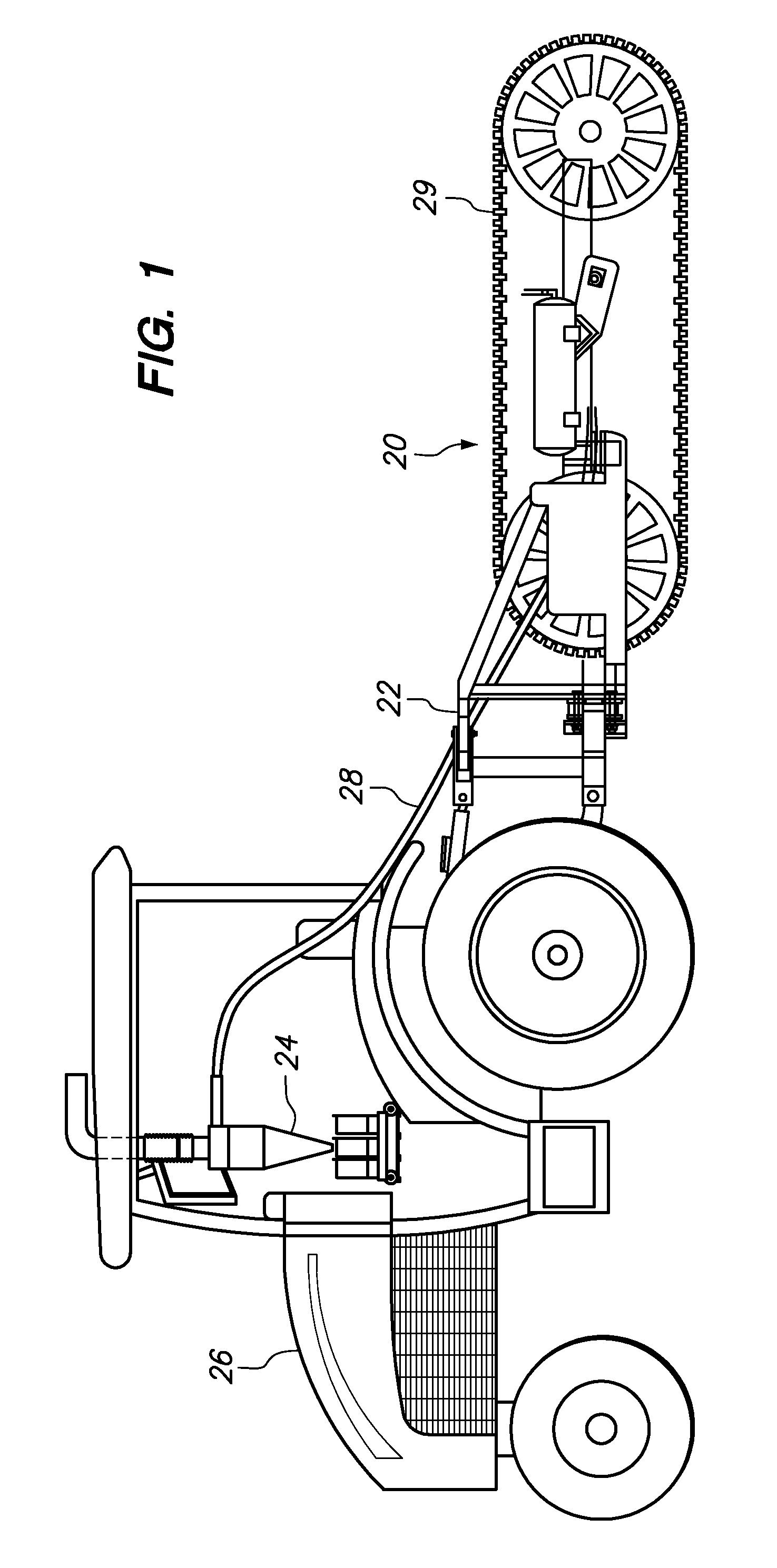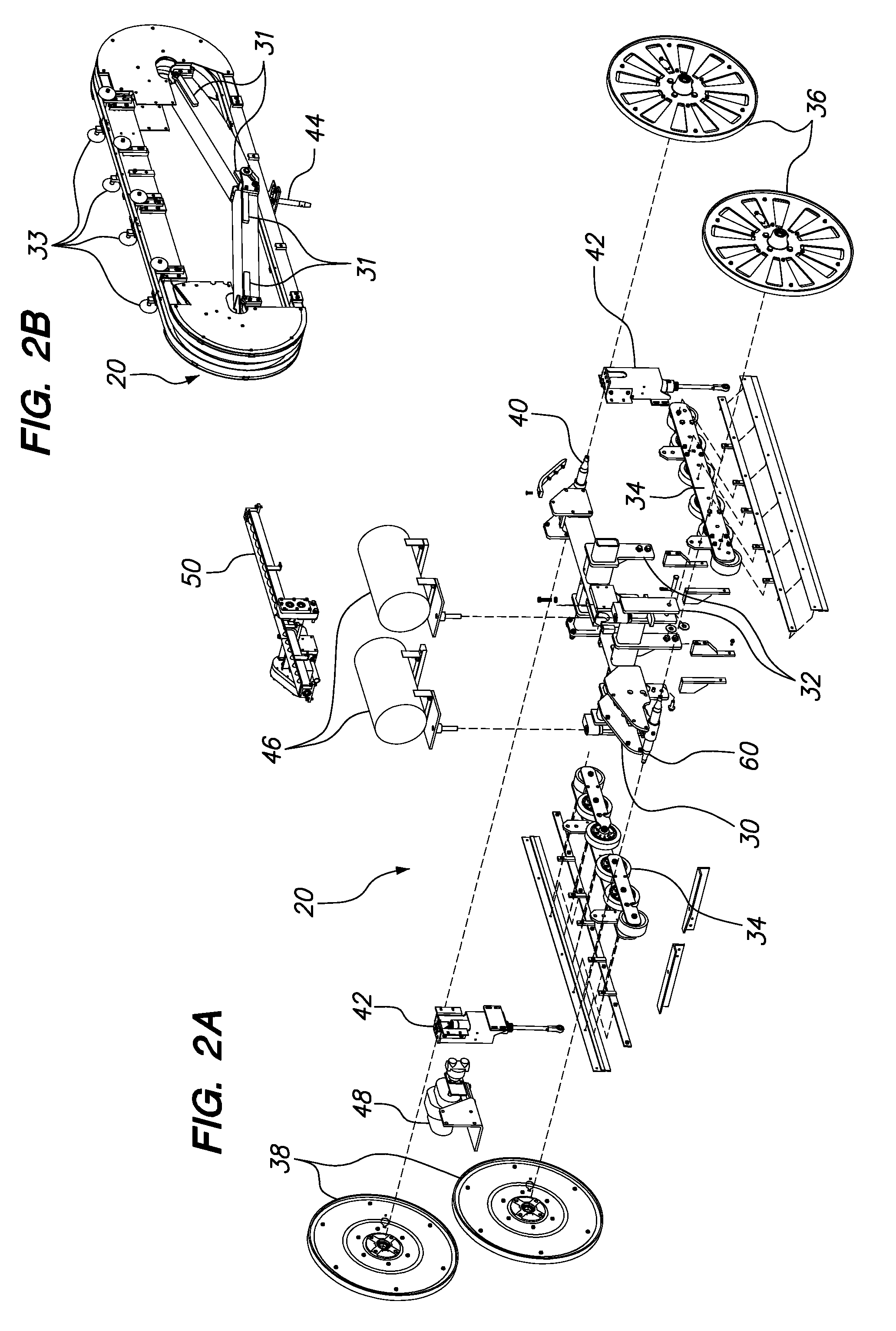Soil Sampling Apparatus and Method
a soil sampling and soil technology, applied in the direction of instruments, transportation and packaging, borehole/well accessories, etc., can solve the problems of inability to know how much fertilizer or other additives to place on the soil plot, manual operation to perform soil sampling is necessary, tiresome and time-consuming, etc., to achieve convenient operation, easy maintenance, and low cost
- Summary
- Abstract
- Description
- Claims
- Application Information
AI Technical Summary
Benefits of technology
Problems solved by technology
Method used
Image
Examples
Embodiment Construction
[0037]With reference to FIG. 1, an overview of the preferred embodiment of the present invention may be described. Sampler assembly 20 is attached to tractor 26 by means of hitch assembly 22. As will be described in greater detail following, sampler assembly 20 is the mechanism that collects soil samples as track 29 turns while in contact with the ground. While in the preferred embodiment the rotational drive member of the invention is provided by a rubber track 29, many other drive means may be employed in alternative embodiments. Metal tracks could be employed, which are commercially available. Another embodiment may feature a pair of roller chains that rotate about sprocket pairs, with cross pieces fitted between the roller chains forming in effect a track-type arrangement. Channel iron in a “C” shape may be ideal for this embodiment since the rides forming the arms of the “C” shape may be faced outwardly in order to provide traction. In another alternative embodiment, track 29 m...
PUM
 Login to View More
Login to View More Abstract
Description
Claims
Application Information
 Login to View More
Login to View More - R&D
- Intellectual Property
- Life Sciences
- Materials
- Tech Scout
- Unparalleled Data Quality
- Higher Quality Content
- 60% Fewer Hallucinations
Browse by: Latest US Patents, China's latest patents, Technical Efficacy Thesaurus, Application Domain, Technology Topic, Popular Technical Reports.
© 2025 PatSnap. All rights reserved.Legal|Privacy policy|Modern Slavery Act Transparency Statement|Sitemap|About US| Contact US: help@patsnap.com



